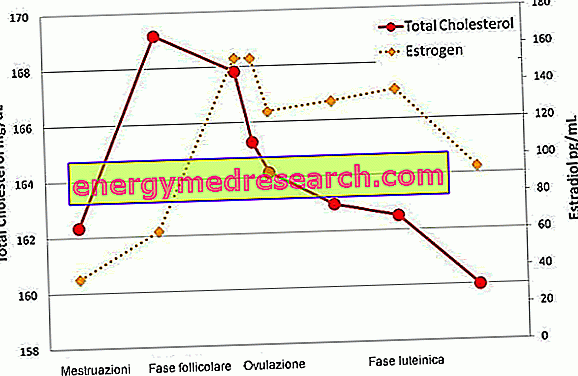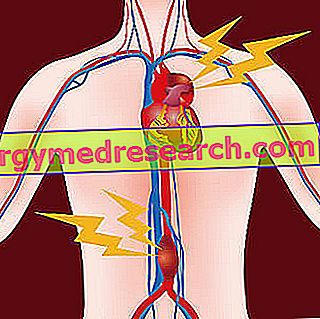Pityriasis rosea of Gibert
The pityriasis rosea of Gibert is a known, rather frequent, benign dermatosis with a generally spontaneous resolution and presumed infectious nature; it is an acute eruptive morbid condition, whose etiology, as already extensively discussed in the previous discussion, is still uncertain.
In most affected individuals, the diagnosis is almost simple and consists of simple physical examination. However, in some cases, the simple physical examination could be more complicated, therefore the differential diagnosis is necessary; in this regard, a careful classification of the various forms of pityriasis of Gibert is a must.

Differential diagnosis
The diagnostic differentiation of pityriasis rosea is necessary: this should not be confused with Pityriasis versicolor, chronic lyrenoid pityriasis, lichen planus, guttate psoriasis, taxidermies (iatrogenic allergic dermatitis), Tinea Corporis (skin mycoses), seborrheic dermatitis and secondary syphilis.
When the - supposed - pityriasis of Gibert also affects the soles of the feet and the palms of the hands, a thorough serological examination is required to exclude syphilis (eg quantitative VDRL) and, when necessary, microscopic isolation investigation of mycetes. The diagnosis must be even more scrupulous when the mother patch is not identified: very often, in similar situations, the diagnosis of pityriasis of Gibert may be erroneous, since the mother spot tends to almost always present itself in the classical forms of pityriasis. However, the exceptions are not lacking, since sometimes in the patients the mother spot could be absent or, in others, be present in more copies.
Classification
Among the atypical forms of pityriasis of Gibert, clearly rarer than the classical form of dermatosis, we recall:
- Pityriasis rosea giant : dermatosis that affects the scalp, genitals, oral mucosa and nails (typical thimble-like appearance). The symptomatic picture is almost the same as the pityriasis rosea of Gibert.
- Inverted or reverse pityriasis rosea: despite being an unusual dermatosis, it is typical of people with dark-olive skin. The macules spread in unusual anatomical areas such as, for example, lower and upper limbs, and face; the typical areas of pityriasis (trunk, in particular) remain unharmed.
- Pityriasis rosea circinata and marginata of Vidal : this atypical form of dermatosis tends to last for a few months, despite treatments aimed at its recovery. Generally, the pinkish spots are isolated from each other, but the dimensions are wider.
- Pityriasis rosea vesicular : pitiriasica dermatosis very common among the black race, particularly among the young and the very young.
- Pityriasis rosea urticata: as the term suggests, this form of pityriasis is also accompanied by hives.
Among the other lesser-known and more infrequent forms there are also purpuric-hemorrhagic pityriasis, pityriasis lichenoid and pustular pityriasis.
When the hypothetical pityriasis rosea of Gibert does not resolve within 10 weeks, a further medical check-up is necessary in order to exclude plaque parapsoriasis, sometimes a precursor to cutaneous lymphoma.
therapies
To learn more: Drugs for the treatment of Pitiriasi Rosea di Gibert
As already analyzed, when it comes to the classic form of pityriasis rosea of Gibert, targeted therapies are not necessary, since dermatosis tends to regress spontaneously in about 4-5 weeks from onset. When the pitiriasica dermatosis is also associated with a ferocious form of itching, the doctor generally prescribes the administration of antihistamines per os. Systemic cortisone therapies are not recommended because they could aggravate the pre-existing condition, exacerbating the damage.
However, topical application of cortisone-based ointments (mild to medium intensity) can lighten the itching and eventually erythema created. Sometimes, the use of menthol-based creams calms the feeling of local heat; when the itching is incessant and the person suffering from pityriasis rosea continues to scratch the affected area, it is advisable to apply creams containing local anesthetics (eg pramoxine).
Also useful are creams and ointments with an emollient action, a practical aid against dry skin generated by dermatosis; the application of detergents with slightly acid pH and very moisturizing is also recommended, since the injured skin is particularly sensitive and delicate.
Exposure to the sun and artificial UVB lamps is not recommended in case of pityriasis rosea by Gibert, as this habit could exacerbate dermatosis.
Curiosity
Curiosity: characteristics of the pityriasis rosea of Gibert | ||
Pregnant women | Infants / Infants | Subjects with dark-olive skin |
The probability of onset of pityriasis rosea in pregnant women is slightly higher than in other women. When it comes to pityriasis rosea from Gibert, there is no damage to the fetus: however, it is necessary to exclude the absence of secondary syphilis (whose symptoms could be confused with pityriasis), much more dangerous for the unborn child. | The pityriasis rosea of Gibert in infants and infants tends to be more aggressive and to degenerate in urticaria | After treating pityriasis rosea in subjects with dark complexions, hypochromic macules (white spots on the skin or clear) or hyperchromic (dark patches) are very likely. The phenomenon is transitory in most cases. |



